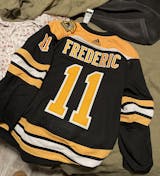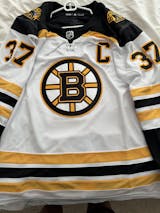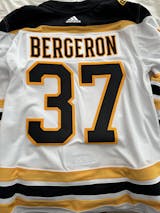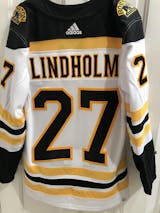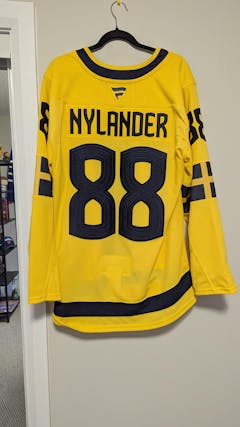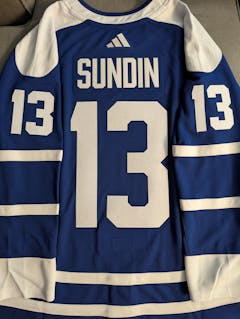- Officially licensed by the NHL
- Official NHLPA name and number pro stitched just like the players wear
- 100% polyester
- Made with Primegreen - a series of high-performance recycled materials
- Authentic tie-down fight strap with hook-and-loop and snap closure
Choose from the following players: Samuel Asselin, John Beecher, Patrice Bergeron, Charlie Coyle, Jake Debrusk, Matt Filipe, Nick Foligno, Trent Frederic, A.J. Greer, Curtis Hall, Taylor Hall, Brett Harrison, Joona Koppanen, David Krejci, Jakub Lauko, Vinni Lettieri, Fabian Lysell, Brad Marchand, Marc McLaughlin, Georgii Merkulov, Tomas Nosek, David Pastrnak, Craig Smith, Oskar Steen, Jack Studnicka, Chris Wagner, Pavel Zacha, Jack Ahcan, Victor Berglund, Michael Callahan, Brandon Carlo, Connor Carrick, Connor Clifton, Derek Forbort, Matt Grzelcyk, Hampus Lindholm, Ryan Mast, Charlie McAvoy, Mike Reilly, Dan Renouf, Kai Wissmann, Nick Wolff, Jakub Zboril, Brandon Bussi, Kyle Keyser, Keith Kinkaid, Jeremy Swayman, Linus Ullmark, Zdeno Chara, Bobby Ore, Tuukka Rask .





















